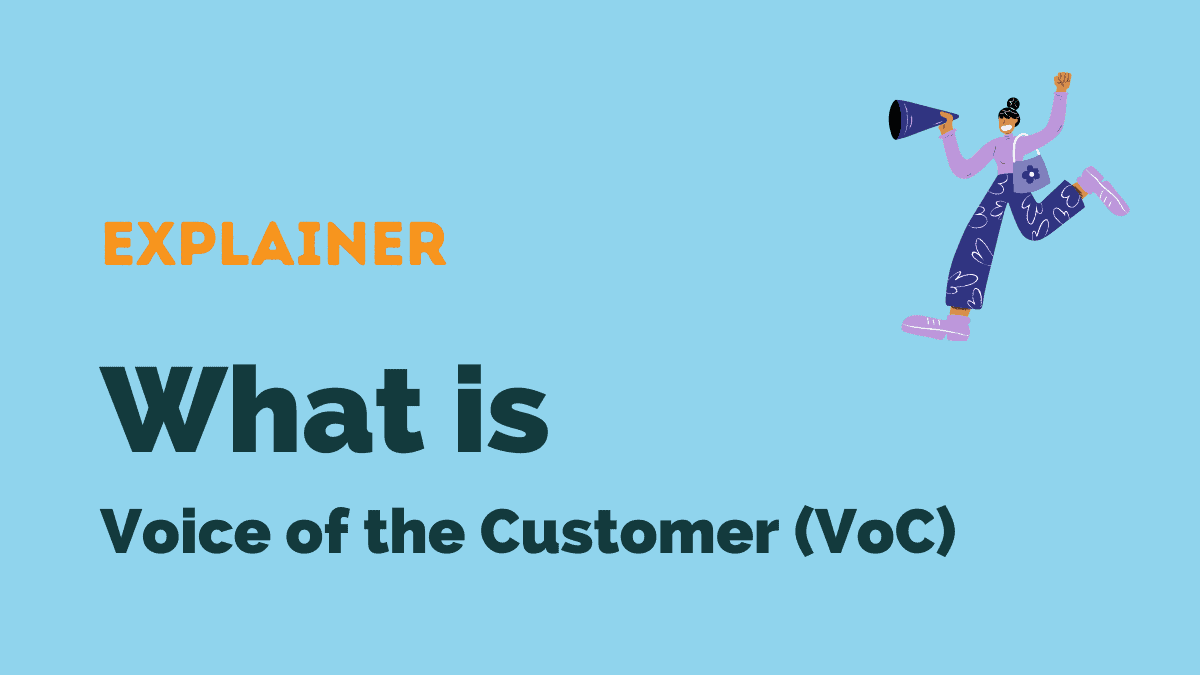Modern customers notoriously high service expectations.
And I’ll bet your business is keen to meet those expectations, right?
But… what exactly do customers want?
What are these diverse needs that customers simply *must* have filled?
That’s what a VoC program aims to find out.
In this post:
- Defining Voice of the Customer
- Why does VoC matter?
- Voice of the Customer can be very targeted
- How do businesses enact a VoC program
- Use the ACAF model for feedback
Defining Voice of the Customer
Voice of the Customer (VoC) is the collected commentary that customers make about your brand.
This can be:
- Addressed to you directly (like feedback forms)
- Not addressed to you (like social media posts)
- Asked for by you (like customer surveys)
- Not asked for by you (like 3rd party reviews)
So one way to think about VoC is what customers say about you.
But here’s another way: VoC is the gap between customer expectations and the reality of your services.
Why does VoC matter?
There are two main reasons to focus on the Voice of the Customer.
First, you have to listen to customers because they listen to one another!
Seven out of 10 millennial customers feel obliged to share customer service experiences, good or bad.
Almost all will also look at reviews before buying something.
The second reason is that there is no cheaper or more abundant source of consultation than customer feedback.
For every high-priced marketing consultant there are thousands of customers who will tell you exactly what should change to make your service better!
Voice of the Customer can be very targeted
Customers say a lot of things.
One of your challenges is to look at what they say and to try and learn broad lessons.
However, VoC can also answer more targeted questions.
For example, a good VoC program might look at specific questions like:
- How has our rebrand changed customer perceptions?
- How much happier are customers who get service within our SLA ??
- Do customers feel that we offer the right channel mix?
How do businesses enact a Voice of the Customer program?
There are three key steps in enacting VoC.
#1 Identify the sources of customer insight
Ask yourself this: what are the channels through which you can learn about your customers?
Will you use social listening to find mentions which are not directed at you?
Will you send out surveys?
Will you analyze complaints?
Create a list of every channel where you might find this information – and keep adding more as they appear!
#2 Establish the questions you want to answer
Set out what exactly you are trying to learn.
There could be dozens of questions where you need insight and the list will change a great deal over time.
Some of the topics are things you’d never have thought of.
The rest is stuff that you know full well is important!
#3 Highlight trends in what customers say
Everybody’s favorite part; categorization.
It’s really important that you look for patterns in what customers tell you.
Word clouds are one great way to visualize the significance of topics.
The key is to get past your own expectations and look at the data as objectively as possible.
You will probably need to categorize these too; CX challenges, products challenges, service challenges, etc.
Use the ACAF model for feedback
Voice of the Customer programs obviously have a lot of overlap with general customer feedback.
In customer feedback, the ACAF model is one of your most useful tools.
ACAF stands for:
- Ask
- Categorize
- Action
- Follow-up
Of these, the most important is Act!
Many VoC programs have fallen apart because there is no defined way to use what is learned.
So make sure your VoC team has a plan for feeding back into the wider business.





